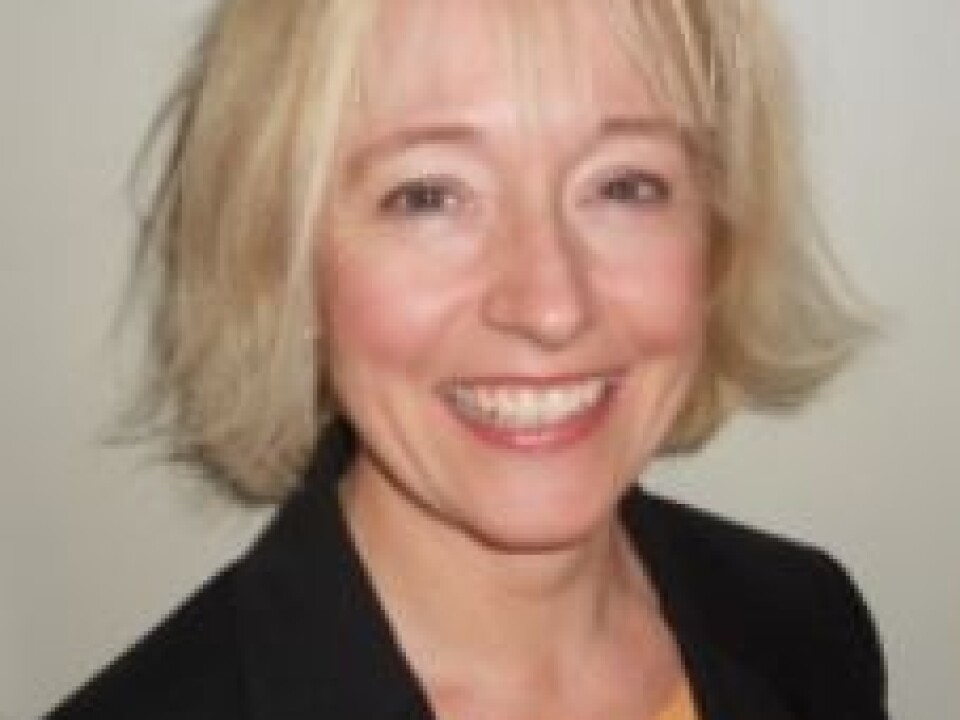An article from KILDEN Information and News About Gender Research in Norway

Talk about sexual harassment
Sexual harassment in the workplace can get worse if nobody asks about it. At Uppsala University more than 3,000 employees have been trained to deal with the problem.
Denne artikkelen er over ti år gammel og kan inneholde utdatert informasjon.
The problem of sexual harassment will not go away if everybody closes their eyes to it.
“The employer must handle the problem, ask questions, and have the courage and be prepared to listen to the answers. It’s very quiet on this front – far too quiet,” says researcher Gunilla Carstensen.
She is one of the few researchers in the Nordic region who has studied sexual harassment in academia. As part of her work, she has interviewed female doctoral research fellows about their experiences with sexual harassment.
Reluctant
According to the Norwegian Equality and Anti-discrimination Ombud, the problem of sexual harassment is extensive in academia. In spite of this, many educational institutions in Norway are reluctant to ask about sexual harassment during performance appraisals and on employee surveys.

This is justified by saying it is difficult to formulate questions that capture the problem in an effective way and that it is not possible in an anonymous survey to follow up individual cases as required by the Gender Equality Act. As a result, they do not ask about sexual harassment and rely instead on general reporting routines and ethical guidelines.
A negligible problem
“The problem of sexual harassment in academia is minimized in a variety of ways. Incidents of offense and abuse are marginalized and downplayed. At the same time, it’s clear that experiences like these are a part of daily life for a number of employees and students,” says Carstensen.
Her research shows that sexual harassment is viewed as a general problem, in the sense that people think it happens somewhere out there. It is not considered to be an actual, relevant problem in the daily life of academia.
”It’s important to view sexual harassment as a problem with the working environment and not as something ‘wrong’ in the relationship between the perpetrator and the victim. After all, it has nothing to do with ‘personal chemistry’, but it says something about the working environment and the culture at the workplace,” she says.
Not the entire picture
The first Swedish study of sexual harassment was published in 1987. Twenty-five years later, very little research has been done on sexual harassment in academia in Sweden – in Norway there are hardly any research at all. There has only been a couple of internal surveys at the University of Bergen and the University of Oslo.
“The field of sexual harassment is dominated by a quantitative perspective with a focus on numbers and individual cases, which risks enhancing the perception of sexual harassment as a well-defined, clearly delineated problem,” says Carstensen.
“My perception is that research on these issues is still in its infancy. Much work remains, both when it comes to drawing attention to the issue and problematicizing it, theoretically as well as empirically.”
The phone that disappeared
But how can we find out anything about sexual harassment when only very few people want to talk about it? Following a harassment case at the University of Oslo in 2009 that attracted enormous media attention, the university set up a special phone line for reporting sexual harassment. One month later a radio news station reported that nobody had called the new phone line. The university no longer mentions it on their website, and the phone number from 2009 no longer works.
Why is it so difficult to talk about or report sexual harassment in the research sector?
“In part it has to do with shame and feelings of guilt. The person affected doesn’t want to see herself as a victim, especially not if it’s a workplace where the ideal employee is independent and competent, in keeping with the concept of the model researcher at a university. Reporting that you’ve been harassed doesn’t fit with the ideal at workplaces like this,” explains the Carstensen.
Sexual attention a friendly game
“It might have to do with the strong perception that what counts at work are a person’s formal accomplishments and expertise, not gender. This makes it hard to label certain actions ‘harassment’ or ‘offenses’.”
Carstensen also believes it may have to do with expectations that women are supposed to like sexual attention and that it is a part of the friendly social game played between the genders. This can make it difficult to go against these norms and break the social codes at the workplace.
The Swedes ask
Like Norwegian employers and educational institutions, the Swedes are required to take action on cases of sexual harassment and to conduct prevention activities. Neither Uppsala University nor Stockholm University in Sweden sees any problem with asking about sexual harassment in its performance appraisals and employee surveys. They also ask about negative actions arising from other forms of discrimination.
Annika Lindé, Director of the Equalities Office under the Human Resources Division at Uppsala University, points out that measures against sexual harassment need not cost an arm and a leg.
“It’s my experience that the earlier you launch measures, the less expensive it is for the organization. A negative situation that isn’t dealt with often results in sick leaves and requires a huge amount of energy and work time for the people involved in the case,” she says.
In the past nine years Lindé has trained more than 3,000 employees at the Swedish university about sexual harassment and says the demand for knowledge is on the rise.
“Sometimes it takes only one or two conversations with human resources to improve the situation; other times we maintain contact with the parties over a relatively long period of time. In the cases that are not handled by our lawyers, we focus primarily on finding out what we can do in the future to improve the situation rather than finding out exactly what happened,” explains Lindé.
Hidden statistics
Uppsala University receives 35 to 40 reports per year related to gender-based harassment, including sexual harassment. Of these cases, only one to three are investigated by the legal department at the university. One reason for this, according to Lindé, is that this kind of investigation is subject to full public disclosure.
“But the cases that come to us are not the entire picture, of course. It’s hard to say how many unreported cases there are.”
Stockholm University has received 14 reports from students who believe they were sexually harassed and three reports from employees, but there are unreported cases here as well, according to Anne Jutterdal, the Gender Equality Coordinator at the university.
Words and actions
"The human resources department holds annual training sessions on activities to combat sexual harassment for safety deputies, new employees and other interested parties,” says Lindé.
Gunilla Carstensen asserts that the educational institutions can still do more and that their word and actions do not always correspond.
“In a way this problem is taken seriously in the form of guidelines, routines and steering documents. In practice, the person affected may face suspicion until she or he reaches the ‘right’ person. Whether the organization takes the matter seriously and handles it adequately can be related to who is being accused. If it’s a person who the organization has had problems with before, the case will be taken more seriously than otherwise. The same is true for the person who has been harassed.”
Translated by: Connie Stultz
































